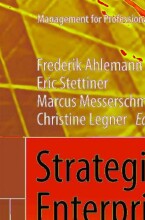People, adoption and introduction of EAM
8 important questions on People, adoption and introduction of EAM
How come that EAM has neglected the needs and perspectives of EAM practitioners and relevant stakeholders?
Enterprise architecture management (EAM) has emerged from a
fairly technical perspective on enterprises, and did not initially fully
realise the importance of ‘soft’ human factors. Consequently, EAM
practices were developed and implemented without significant attention to the needs and perspectives of EAM practitioners and the relevant stakeholders.
What are the consequences of neglecting the soft human factors?
unsuitable, which are then rejected by their stakeholders.
Why is aligning EAM practices with stakeholders' needs a critical success factor?
Because key users and important EAM stakeholders are the ones
who eventually decide a new management approach’s success or
failure.
- Higher grades + faster learning
- Never study anything twice
- 100% sure, 100% understanding
How can we increase EAM adoption?
- We need to ensure that EAM practices are perceived to be useful to and by the actual stakeholder.
- EAM practices should be recommended by influential colleagues and managers to generate positive word of mouth.
- EAM practices can be increased through organisational support in the form of training and technical assistance.
- Providing incentives and making the techniques fun to use are further ways to encourage individuals to apply EAM practices
Describe a possible introduction process
- Such an introduction process consists of 10 steps.
- Each process cycle should not take longer than 3 to 9 months, allowing for the quick realisation of benefits and an ongoing
- improvement of EAM practices.
- In order to avoid working in an ivory tower, management should adopt a pragmatic 80/20 approach, combined with a strong stakeholder orientation. This strategy also ensures a lasting impact.
How can EAM practices produce resistance?
Soft factors are important for EAM success, they should not be neglected (due to let EA be a mere engineering initiative that focuses on methodologies and models).
Introducing EAM means change, which can produce resistance.
How to close the gap between methodologies to culture?
What are the basic principles for developing EAM in your organisation?
- Develop your EAM incrementally;
- Try to develop your EAM in short cycles;
- Design your cycles as learning experiences;
- Be pragmatic and follow an 80/20 approach;
- Do not implement everything at once.
The question on the page originate from the summary of the following study material:
- A unique study and practice tool
- Never study anything twice again
- Get the grades you hope for
- 100% sure, 100% understanding

Topics that are related to People, adoption and introduction of EAM
-
People, adoption and introduction of EAM - The relevance of the human dimension of EAM - How EAM practices can produce resistance
-
People, adoption and introduction of EAM - Why do stakeholders cooperate? - A psychological perspective on EAM adoption
-
People, adoption and introduction of EAM - How can stakeholders be convinced to cooperate? - A methodological perspective
-
People, adoption and introduction of EAM - How can EAM be introduced? - A process perspective






























